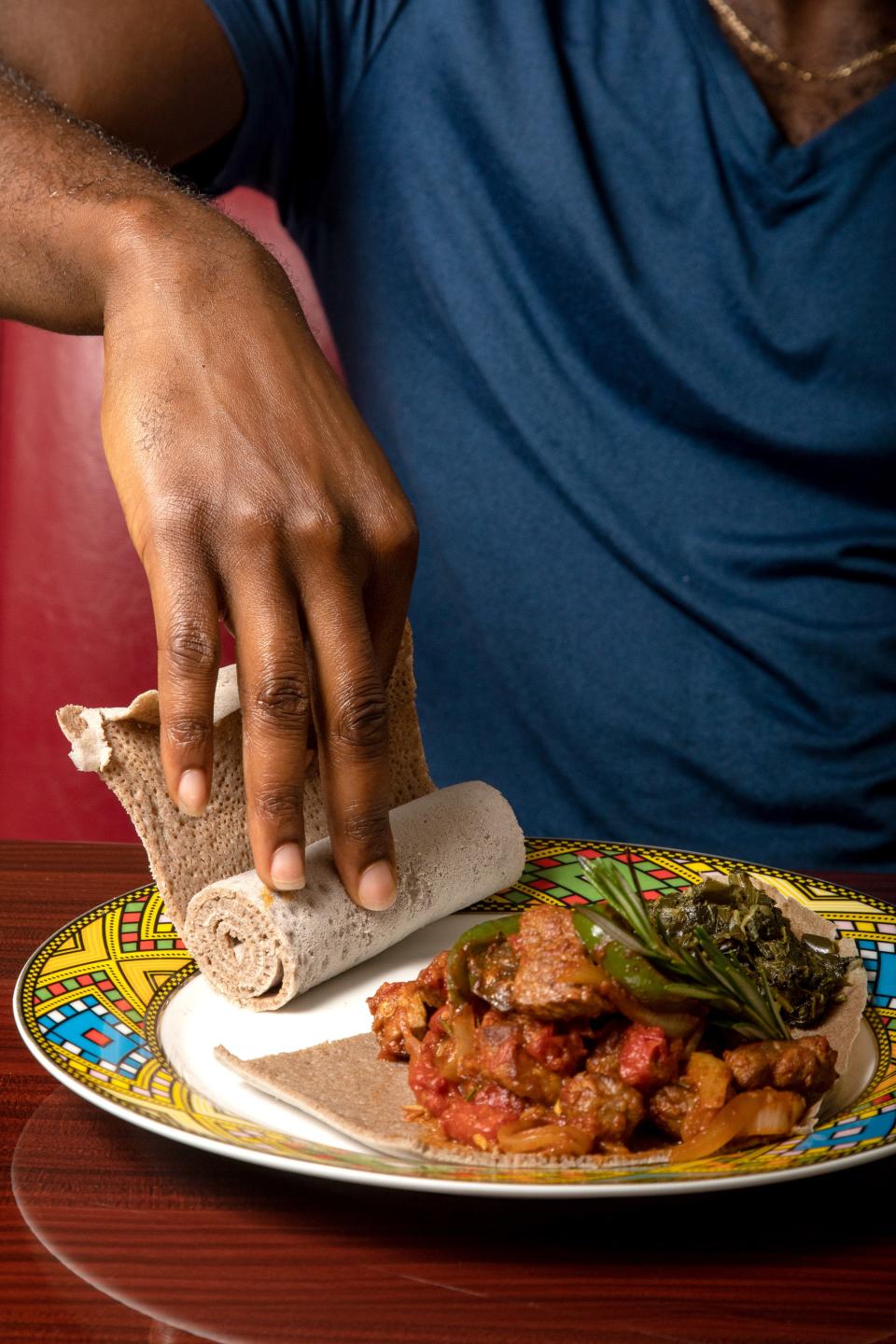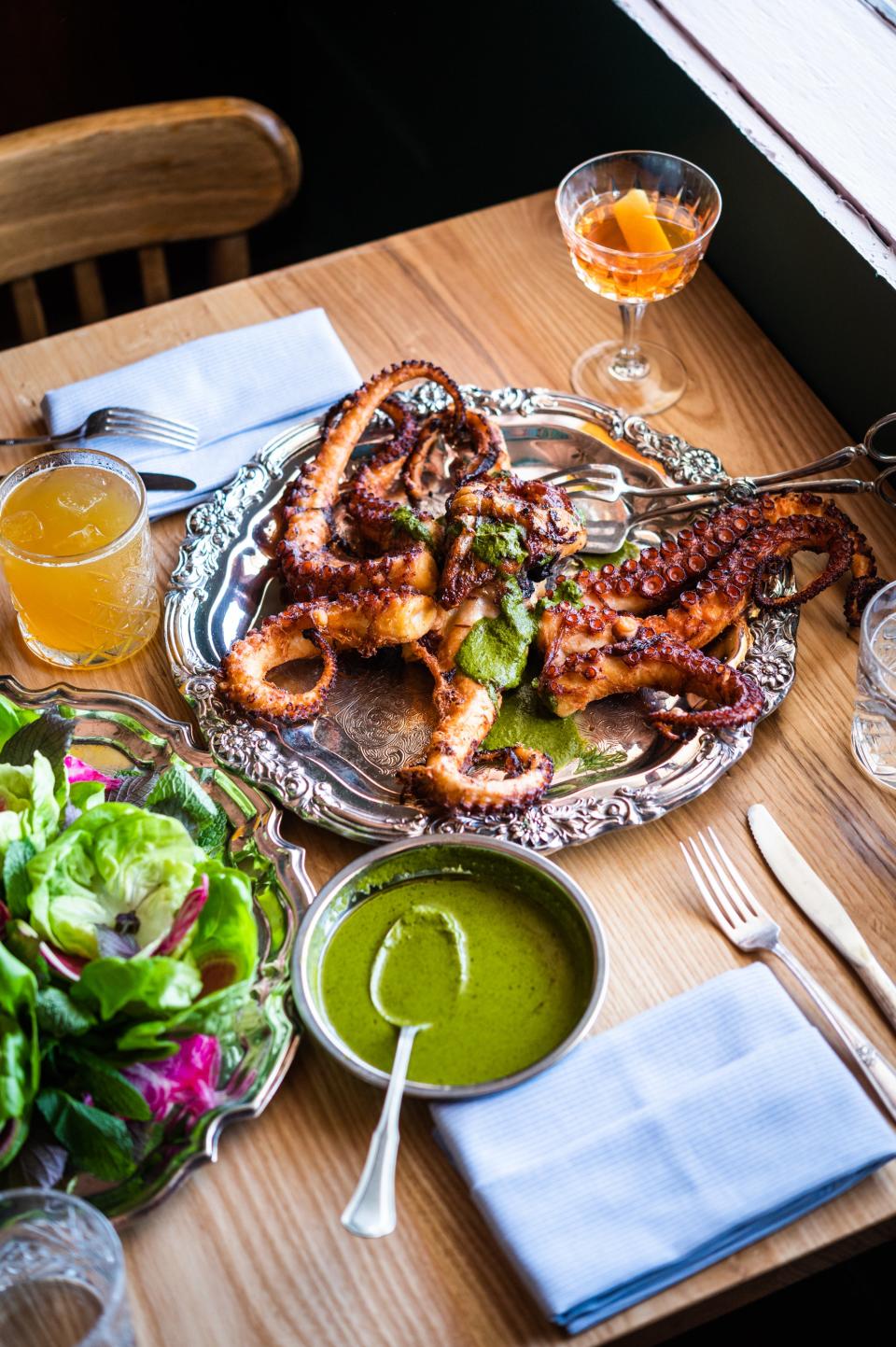In New Orleans, an Exciting Wave of Chefs Are Pulling Diners Away from the French Quarter
It almost feels redundant to accuse the New Orleans culinary scene of having a moment. The Crescent City is consistently at the cutting edge of exciting food and drink—a global siren of such for centuries. Yet even by these grand standards, something special is happening here. The center of gravity is shifting. And it’s as much about new faces as it is about new places.
“Traditional New Orleans cuisine is starting to change, and inclusivity is a big reason why,” says Touré Folkes, founder of Turning Tables, a non-profit promoting equity and diversity in the local bartending and hospitality community. “People are branching out as chefs and showcasing their talents with more variety. And we’re starting to see more diversity in who is running these kitchens. It’s not just white male dudes.”
Through his organization, Folkes is helping the industry evolve into a more accurate reflection of the city it serves. In addition to outreach and events, this means fostering mentorships for Black and brown youths. An externship program started in 2019 places nearly a dozen aspiring F&B professionals, annually, in marquee kitchens and dining rooms across town including The Columns, Sylvain, Palm and Pine, and Domino.
Sadly, some of them shuttered permanently during the darkest depths of the pandemic. Yet while COVID wreaked unprecedented havoc on hospitality, Folkes has observed a thread of silver lining in the proliferation of pop-up culture. During lockdown, bars were required to serve food to stay open as essential establishments. Many of them opted to bring in qualified chefs in dire need of a place to practice their craft after losing their jobs. This symbiosis was not short-lived; in fact, today it is the fertile ground from which independent—often, underground—superstars blossom into bonafide restaurateurs.

Addis NOLA

Mister Mao, Ssam Style Charmoula Octopus
“What you’re seeing is a lot of people testing the waters of who their audience is before taking the leap into brick-and-mortar,” Folkes says. “It’s a smart way to lessen the risk up front, when you know you already have a following.”
He points to myriad examples—including Rosalita’s Tacos, which began life as pop-up in a residential backyard in the Bywater. Earlier this year it went indoors, establishing itself as one of the hottest new restaurants in the neighborhood. Beyond its lime-green facade on St. Claude Avenue, the scent of brisket sizzling on the griddle beckons the masses.
Mister Mao, meanwhile, is the latest draw in Uptown. Cambodian-American chef Sophina Uonga describes her eclectic dining den, complete with roving dim sum carts, as a “tropical roadhouse.” Popping up at notable coffee shops and beer bars throughout the pandemic, she workshopped small plates such as Mawi Tortilla masa dumplings and Escargot Wellingtons; they're now signature dishes on a more formalized menu at a new brick-and-mortar location.
Following suit soon will be Fowlmouth, where Puerto Rican native Ozzie Louis Mendoza Diaz combines Caribbean flavors with Yakitori technique to expert effect. Against the unfavorable odds of 2020, he built the most talked about supper club in the city, operating it out of his apartment on a reservation-only basis. The celebrated chef is now on the hunt for a permanent location.
He’ll have a wider range of real estate from which to choose. As Folkes points out, a new wave of visitors with epicurean leanings are willing to explore beyond the well-worn streets of the French Quarter and the Garden District. “Foodies will go to destinations specifically to seek out certain chefs and restaurants,” he says. “Before Mairje’s [Grill] opened, Broad Street in Mid-City used to be filled with bail bonds places. It was a real food desert. Now you’ve got Addis NOLA [serving Ethiopian comfort food]. They’ve attracted so many people to that block.”
Folkes expects this exploration to inevitably spill over to the opposite side of the Mississippi River—most immediately into the Algiers neighborhood along the West Bank, one of the oldest sections of the city. Here, independent venues like Congregation Coffee Roasters and the Crown & Anchor Pub are continually hosting a parade of pop-up options, often showcasing local talent. The area’s Vietnamese credentials are well-publicized, but now it offers less-expected options such as the fast casual Indian food of Plume Algiers, where you can find dishes like Safed Khargosh (braised, bone-in Mississippi rabbit glistening under a cashew butter gravy), and kaathi rolls stuffed plump with chicken or shrimp.
“The [Algiers Point-Canal Street] ferry is super easy,” Folkes says. “I don’t know if I’m letting the cat out of the bag. But that’s a whole different side of New Orleans. And it’s right there.”
As a matter of fact, excitement is everywhere in New Orleans. So choose wisely. “It’s not all about gumbo and po’ boys and Brennan’s—think outside the box,” he recommends to visitors. In a city built around food and beverage, where you eat has real impact—from the local communities you support financially to the awareness you invite internally. The effect of the cuisine is felt equally on both sides of the kitchen, as much by those preparing it as by those enjoying it.
“Do the research to find out how to support the people outside the traditional channels and be cognizant of emerging talent,” he says. “I think Commander’s Palace has got the business they need.” Folkes, for his part, is making this moment about the businesses that don’t.
Originally Appeared on Condé Nast Traveler

